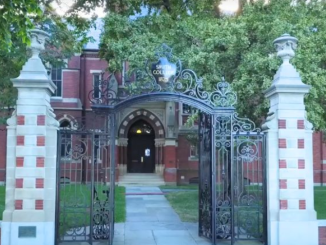
Racism has been a problem in countries around the world for a very long time. Racial tensions in the United States reached a crucial breaking point last year, and many organizations are responding by first overhauling their current practices to be more inclusive. This is why six lesser-known racist Dr. Seuss books have been pulled from production. These are which ones and why. (1)
Racists Dr. Seuss Books No Longer Being Published
Dr. Seuss has long been a beloved children’s author. He published his whimsically-illustrated books between 1937 and 1976. (2) Many of his well-known titles spread good messages, such as the power of kindness in How The Grinch Stole Christmas or environmental stewardship in The Lorax. What many of us probably don’t remember are some of the highly anti-semitic and racist Dr. Seuss books.
{snip}
Dr. Seuss Enterprises made the decision after months of discussion with teachers, academics, and a panel of experts. So far, no other titles are being pulled. (1)
Racist Dr. Seuss Books? How?
If you actually go back and read them, the real question should be what isn’t racist about these particular Dr. Seuss Books.
In And To Think I Saw It On Mulberry Street, an Asian character who is supposed to be Chinese is drawn with just two slanted eyes for lines, is carrying chopsticks and a bowl of rice, and is wearing traditional Japanese shoes. (3)
In If I Ran The Zoo, African characters are drawn without shirts or shoes, wearing grass skirts, and carrying an exotic animal. In all of these titles, African characters are depicted as monkey-like, Arab people are shown riding on camelback, and some other harmful depictions of non-white characters. (3)
“These books portray people in ways that are hurtful and wrong,” Dr. Seuss Enterprises said in a statement. “Ceasing sales of these books is only part of our commitment and our broader plan to ensure Dr. Seuss Enterprises’ catalog represents and supports all communities and families.” (1)
Was Dr. Seuss Racist?
Theodor Seuss Giesel, born in Springfield, Massachusetts, in 1904 and was seemingly a product of his time. That being said, some of the things he wrote and did were racist, regardless of the culture at the time. (1) Just because it was accepted/tolerated doesn’t make it okay.
{snip}
In a recent study published in Research on Diversity in Youth Literature, researchers Katie Ishizuka and Ramon Stephens found that only 2 percent of the human characters in Seuss’s books were people of color. All of these characters were depicted using harmful, racist stereotypes. (4)
Seuss died in 1991, so it is impossible to say what his views were. However, it suffices to say that he would certainly need to do a lot of self-reflection and seek education on the topic of racism and offensive stereotypes.
Removing Racist Dr. Seuss Books: Praise And Backlash
There are many people who are happy that Dr. Seuss Enterprises is no longer going to be publishing these racist books. The National Education Association has been moving in that direction since 2017. (1)
They founded Reading Across America Day in 1998 to coincide with Dr. Seuss’ birthday.
{snip}
Libraries across North America and on other continents are conducting their own reviews to ensure any of the mentioned Seuss books are either pulled from shelves or moved to a different section. (1)
That being said, there are many people on social media who are very angry about the move. Some claim that the books are not racist and that people are too sensitive. Others say that this is part of “cancel culture” and should instead be used to open up a discussion about harmful stereotypes rather than being pulled entirely.
“Product Recall”, Not Cancel Culture
Philip Nel, a scholar of children’s literature and the author of Was The Cat in the Hat Black? and other books on Seuss, says that he understands it can be hard for people to reconcile that some of their favorite childhood books are racist. He says to not think about it as the books being canceled, but rather as being recalled like a defective or dangerous product. (1)
“These books date from the ’30s, ’40s and ’50s, but if you think for example of automobiles in the ’50s, they didn’t have seatbelts … Now all cars have seatbelts, because it’s a really good idea, if you like driving and staying alive,” he explained. “So things change, and Random House is recognizing that maybe it would be a good idea if we didn’t publish books that put damage into the world.” (1)
Other children’s authors and teachers agree. It is important for books that children read in the classroom to affirm them and their identities, not make them feel uncomfortable or ashamed. (1, 2)
We Can Still Discuss His Works
Yes, we should still discuss his works and use them to open up discussion on racism and stereotypes.
{snip}
In a 1990 article, children’s literature scholar Rudine Sims Bishop wrote about what happens when children of color see people like them depicted as these harmful stereotypes.
“[If] the images they see [of themselves] are distorted, negative [or] laughable, they learn a powerful lesson about how they are devalued in the society in which they are a part,” (5)
Books like these can be used for study in classes with older children, perhaps in high school or literature classes in university. However, these racist Dr. Seuss books should just be off the table when it comes to young children. It is far more impactful for young children to interact with inclusive, diversity-positive books.
Children’s Books That Celebrate Diversity
Want to avoid these racist Dr. Seuss books, but not sure what books to read with your kids or students? Check out some of the titles below that celebrate diversity of all kinds:
I could go on to list hundreds more books, however a quick Google search of “children’s’ books that celebrate diversity” will help you find even more.
* Original Article:
6 Dr. Seuss Books Will No Longer Be Published Due To Racist Imagery


